Teach Drawing & Painting Without Knowing How-to
By Spramani Elaun
Lately, my inbox has been inundated with emails from concerned parents and teachers all wrestling with the same pressing question:
“How can I effectively instruct my students in art when I lack the ability to paint or draw realistic pictures?”
I am genuinely excited to provide an answer to this question!
First and foremost, let me assure you that you absolutely can teach elementary-grade students how to paint and draw, even if you don’t possess these skills yourself—I promise.
Now, let’s delve into this topic, and I’ll explain just how it can be achieved.
Although I’m a professional illustrator, painter, and computer graphic artist, the truth is that I rarely have the opportunity to showcase these advanced skills to elementary students. Why, you might ask? Well, it’s because they are typically too young for such intricate instruction. My talents are more commonly shared with high school and adult-level students.
Why You Can Teach Drawing & Painting
The primary reason lies in the fact that children are not yet developmentally prepared for this kind of instruction.
To thrive in the realm of painting and drawing, children must exhibit maturity in three critical areas.
Drawing from my extensive experience of over thirty years, during which I’ve had the privilege of working with hundreds of thousands of students, I’ve pinpointed the scientific process behind how children learn to paint and draw.
These three crucial areas of development intertwine, evolve, and gradually refine themselves over time.
3 Part – Science Art Method
1. **Visual Perception**: This involves the eyes’ capacity to collect and interpret optical information.
2. **Cognitive Processing**: This pertains to the brain’s ability to remember and process visual as well as tactile input.
3. **Fine Motor Abilities**: This encompasses the skill to craft with precision through controlled hand movements.
I have discovered over a long period, three of these aspects are linked to the development of artistic proficiency.
By the time adolescents reach this stage, typically, these areas are well-developed. Consequently, comprehending and mastering concepts like color value, three-dimensional perspective, and refined motor skills becomes significantly easier.
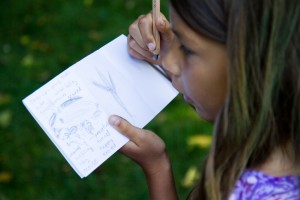
It has long been conventional wisdom that we must introduce children to the works of classical Masters alongside the Elements and Principles of Design.
However, the reality is that many children find it challenging to observe and learn art in this manner. What they truly require are simpler and more accessible art lessons. In essence, children need ample opportunities to engage with fundamental drawing and painting lessons.
As an adult, you possess a valuable reservoir of experience and knowledge that equips you to teach the basics of painting and drawing. To help you get started, here are some elementary-level art ideas you should either be familiar with or take the time to acquaint yourself with:
- Be able to draw basic geometric shapes accurately
- Have the ability to paint a basic shape using a paintbrush
- Know how to purchase art supplies and materials
- Read and follow arts and craft instructions effectively
- Provide guidance to your students or child
- Manage and schedule art lessons
- Keep track of completed lessons
- Demonstrate each step clearly
- Display a willingness to explore and learn alongside your students
- Encourage your students to take the next step and challenge themselves
- Set specific deadlines to complete projects
- Understand and empathize with your students’ emotions; identify when they are struggling, need visual examples, or require verbal explanations to grasp each step
- Recognize that children are not expected to copy images exactly; use visual examples as guides rather than strict rules.
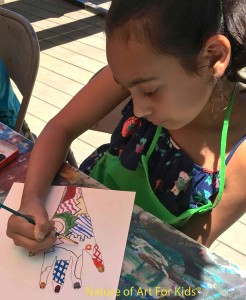
I genuinely believe that children under the age of 12 aren’t receiving adequate foundational art education to support their progression toward realism.
Below, you’ll find foundational drawing, color theory, and painting lessons that you can impart even if you don’t possess personal expertise in these areas.
Rest assured, these lessons will not only benefit your students but also empower you to develop your own drawing and painting skills! 🙂
Should you desire to delve deeper into my scientific art method, please explore my books, art lessons, and curriculum for further insights!
Learn some basic art elements
Line
Shape
Color
Drawing Skills
-
- Learn how to make sketch marks and erase effectively
- Learn how to doodle using different mediums
- Learn how to draw different types of lines accurately
- Learn how to combine lines to create textures
- Learn how to create patterns using lines
- Learn how to color your line drawings using various mediums
- Learn how to draw geometric shapes correctly
- Learn how to draw simple organic shapes
- Learn how to draw symmetrical figures
- Learn how to draw asymmetrical figures
- Learn how to maintain balanced proportions
- Understand the concept of positive and negative space
- Learn how to create different values using various mediums
- Learn how to draw the horizon line accurately
- Learn how to create a vanishing point
- Learn how to make 3D letters
- Learn how to create a one-point perspective drawing
Color Mixing Skills
1. Master primary color mixing to create secondary colors.
2. Explore creative techniques using cool colors.
3. Explore creative techniques using warm colors.
4. Develop proficiency in mixing shades.
5. Develop proficiency in mixing tones.
6. Develop proficiency in mixing tints.
7. Learn the art of mixing various values within a single color.
Painting Skills:
1. Master various line brush mark techniques.
2. Explore painting organic shapes.
3. Develop skills in creating textures using a paintbrush.
4. Learn the art of blending two colors seamlessly.
5. Dive into painting geometric shapes.
6. Experiment with line, dots, and dashes in your artwork.
7. Discover the world of crafting through painting.
8. Explore the art of painting on different surfaces.
9. Acquire proficiency in using watercolor paint.
10. Master the application of tempera paint.
11. Explore the versatility of acrylic paint.
12. Gain insight into simple techniques employed by renowned artists.
13. Learn the art of mono printing.
Teach Drawing & Painting Without Knowing How-To!
Again if you would like to learn more about this science art method you can order my Books by Clicking Here.
Warmly,
Spramani
All rights reserved © 2023, Nature of Art®

No part of this blog may be used or be reproduced in any manner whatsoever including reproducing, publishing, performing, and making any adaptions of the work – including translation into another foreign language without written permission except in the case of brief quotations embodied in critical articles and reviews. Nature of Art® Publishing P.O. Box 443 Solana Beach, California 92075.

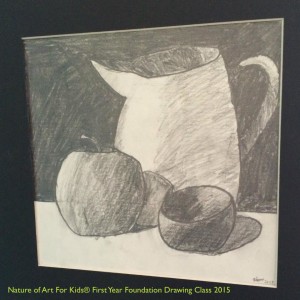
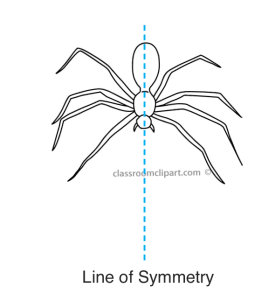
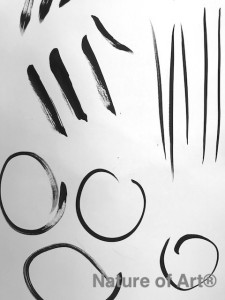

Pingback: How to Teach Children Art |()